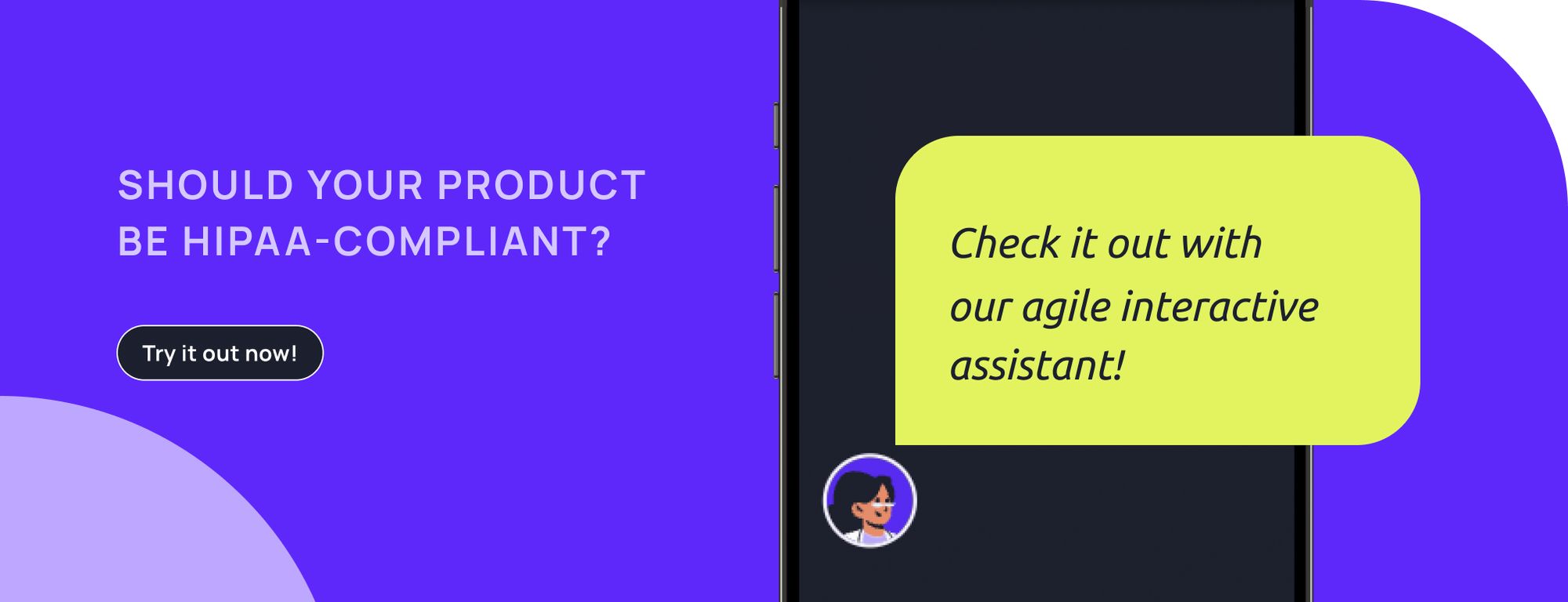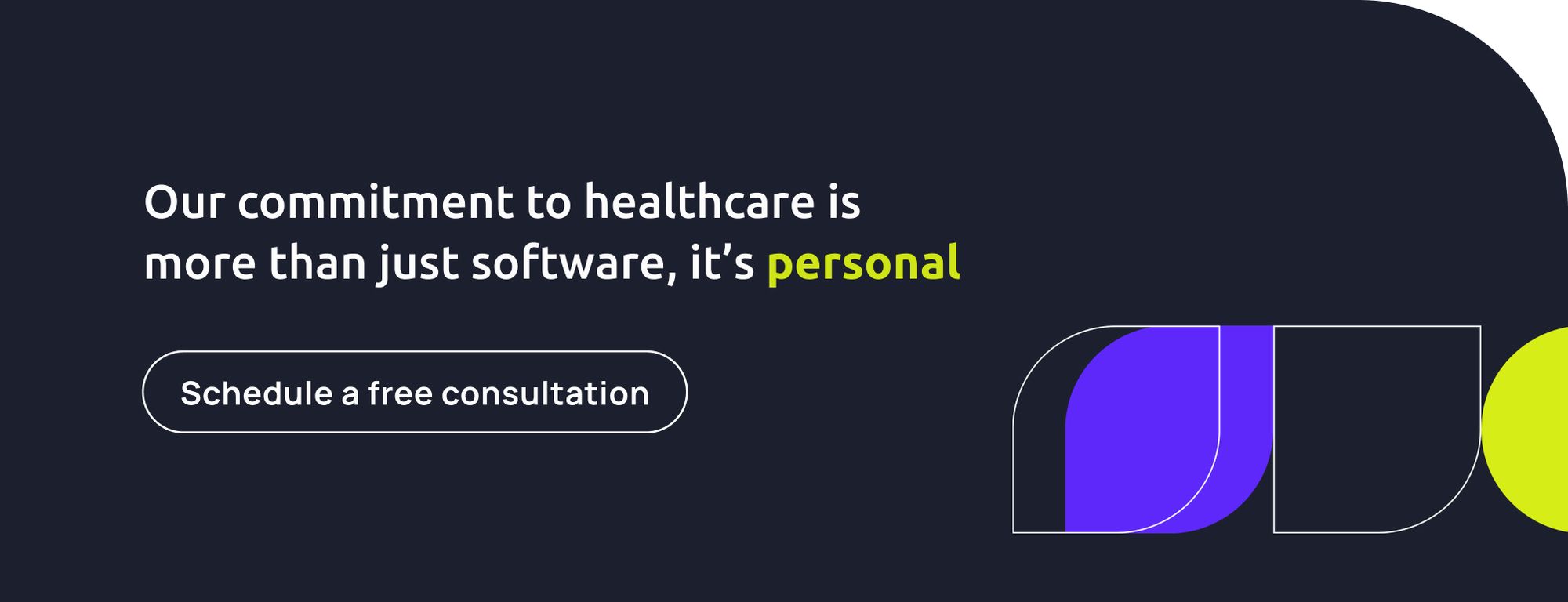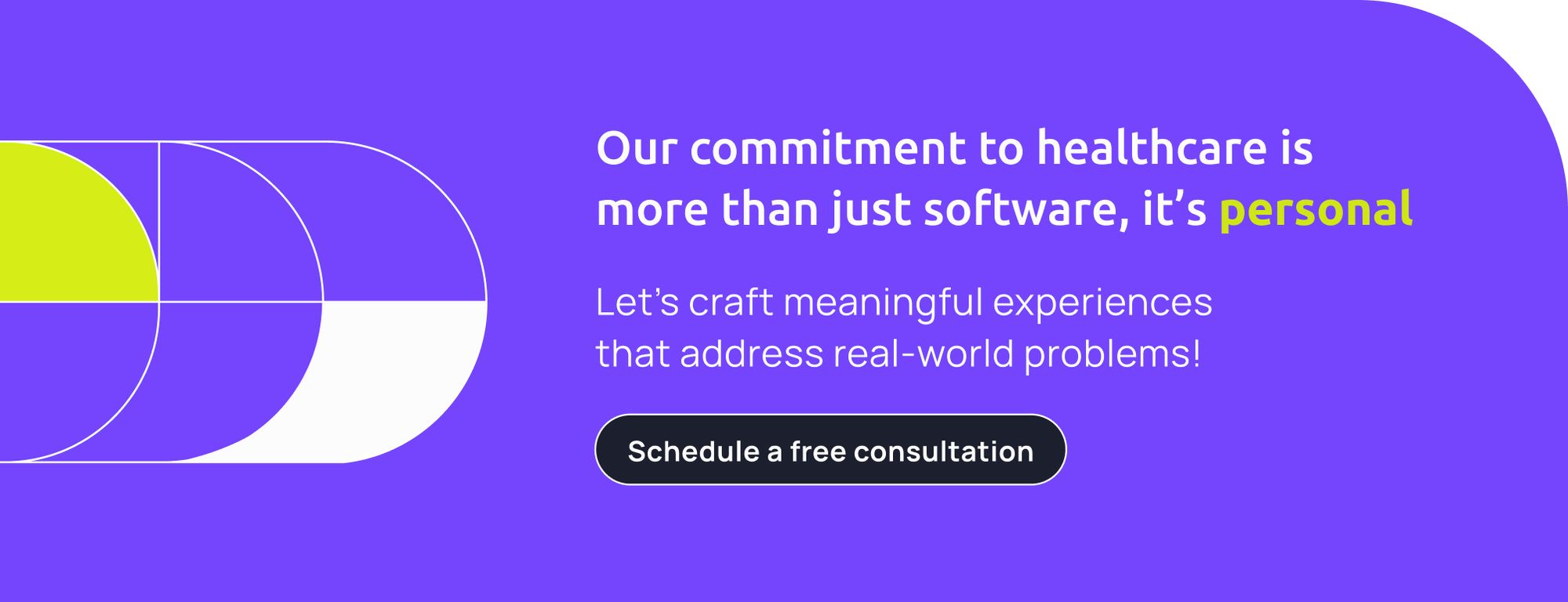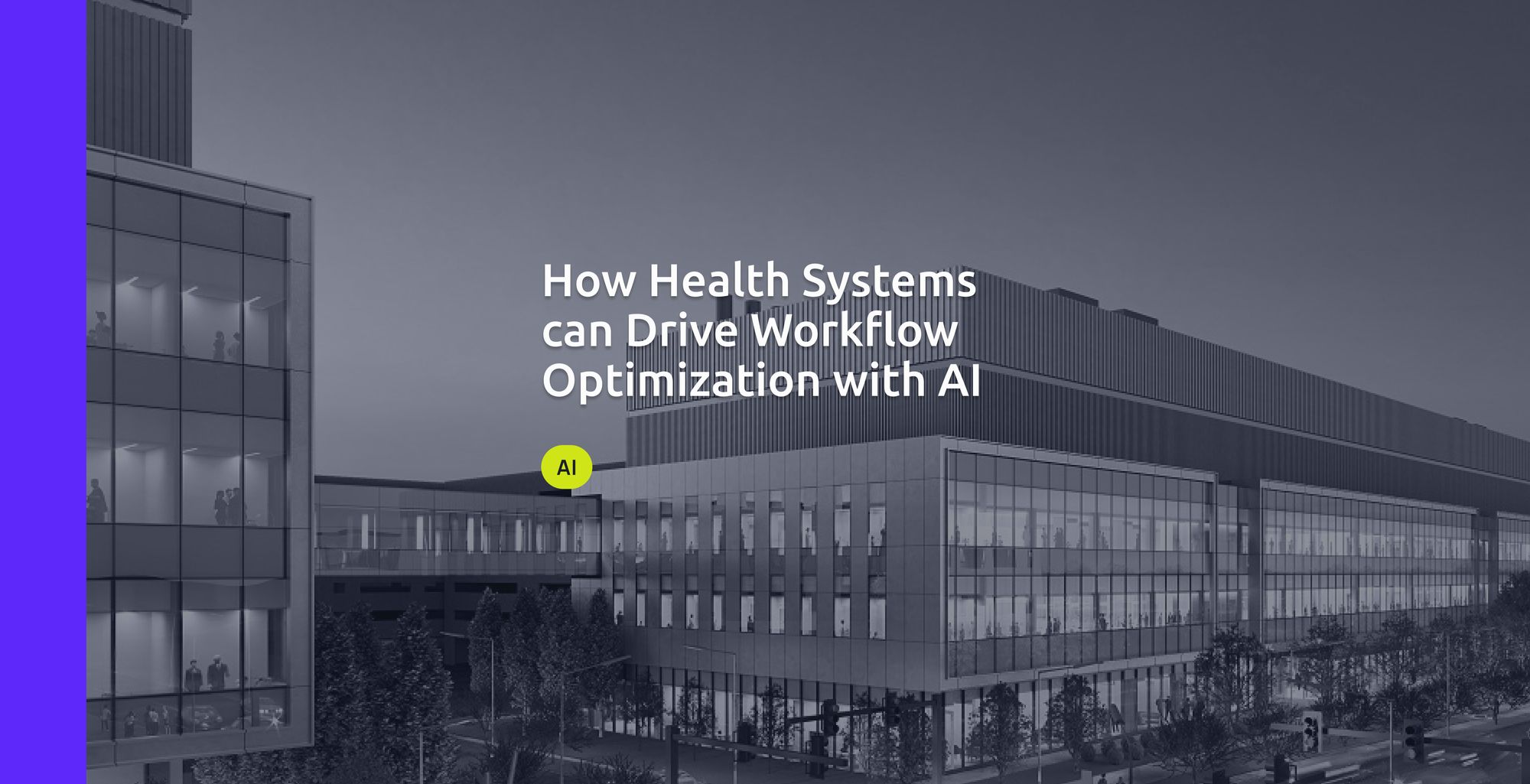Healthcare Systems in the US have been facing a number of challenges, most of which are slowing down important and possibly life-saving processes. From healthcare professionals spending too much time on long administrative tasks, to high costs of care and data security breaches, health systems are constantly fighting industry barriers.
Not all is lost though! We’re in a current state of innovation and technological advancements, which will undoubtedly lead to more efficient workflows, happier physicians and improved patient-centric solutions.
One of the most disruptive technologies at the moment is Artificial Intelligence. We’re already seeing its different uses in the healthcare industry, but the numbers speak for themselves. AI’s market size is expected to show an annual growth rate of 15.83%, resulting in a market volume of $738.8 billion by 2030.
Now that we know AI’s potential (or at least its market size potential) to change and improve our industry, let’s get into how health systems (HS) can drive workflow optimizations by applying AI!
The Current Healthcare Systems Brief
Healthcare Systems have three key stakeholders:
- Patients
- Physicians
- Providers
These stakeholders face challenges that affect:
- Patients' quality of life,
- Patients' access to healthcare
- and Healthcare costs (time and money-wise).
Currently, there are about 400 health systems in the US and about 6,100 hospitals, of which 68% are system-affiliated. Healthcare systems in the US are extremely powerful, as you can see. Yet, there are various challenges facing them:
Physician Burnout
Physicians are the heart and soul of the healthcare industry, but they’re getting tired. Healthcare providers are constantly burdened with administrative tasks, reiterative paperwork and system inefficiencies, which overall consume too much of their energy and time. A survey published in February by Athenahealth concluded that more than 90% of physicians are regularly feeling burned out, mostly due to the paperwork they are expected to complete. Instead of spending time with patients, doctors are spending time on documents.
Most HS currently use Electronic Health Records (EHR) and Electronic Medical Records (EMR) systems as a way of storing patient data, which also demands staff’s time to learn and master these technologies, as well as requires organizations to invest in their expertise.
Furthermore, the demand for healthcare has never been higher. For the past years, diseases and patients have increased demand significantly. A study by Trilliant Health states the demand for surgical and primary care in the US is expected to grow by a CAGR of 1.7% and 2.0%, respectively, between 2022 and 2026.
This means more patients have to be seen in the same number of working hours (or doctors having to extend their working hours), more paperwork, and more chances of healthcare providers feeling unsatisfied with their work.
These new issues for physicians’ work are causing them to invest more than they signed up for, having them concentrate on tasks they shouldn’t be worrying about, and carrying along an impossible burden. Not only are the working healthcare professionals stressed and burned out, but medical staff in the US is thought to run short by 2025 in 37 states, according to the HHS Office of Health Policy. Apart from worsening working conditions, the healthcare industry faces an aging workforce. The same study showed about 50% of registered nurses are over 50 years old, as are about 44% of physicians.
System Inefficiencies
Johns Hopkins recently studied the medical death rate in the US, and the conclusions were alarming. Medical errors cause more than 250,000 deaths per year, accounting for 10% of deaths in the country. This may be the cause of numerous factors, such as a need for better healthcare education, a lack of knowledge concerning specific conditions, seemingly small errors by the staff (greatly because they’re burned out), and even inconsistencies in patient history.
Moreover, healthcare professionals are struggling with the current technologies and communication methods used by health systems. Various Electronic Health Records (EHR) and Electronic Medical Records (EMR) systems are deemed inefficient, slow, and not friendly, which ultimately contributes to physicians’ frustration at work.
Studies have also revealed the cost of inefficiencies is high, economically speaking. Becker’s Healthcare shared that about $12 billion are wasted in poor streamlined communication and coordination amongst different healthcare providers and facilities.
A recent pressing topic regarding the digital healthcare industry is data security breaches. Since the Change Healthcare cyberattack, we’ve all been paying special attention to data leaks, especially if they’re Protected Health Information (PHI) attacks. Hackers have targeted more than 100 million patient records, as stated by The Independent, making healthcare one of the most sensible industries to cyber attacks. Considering health is a never-ending necessity, this cannot continue to be.
High Industry Costs
Healthcare prices increase year to year. This is true for both patients and providers.
In 2022, Americans spent an average of $13,493 on healthcare—more than double the price other countries pay! This is mainly due to high inflation rates and incredibly high supply and drug prices, yet other factors (such as training the staff or hiring more professionals due to the shortage) also contribute to high pricing.
Improving efficiency and workflows
We’ve already stated some of the things we need to improve so as to ensure the healthcare industry works as best as possible; thus providing the best care to the most patients. The question is How.
Many of these problems could be solved (or at least improved) by optimizing the industry’s workflows. Having a more targeted, swift, streamlined, easy, and knowledgeable process would help battle physician frustrations, HS’s antiquated processes, and high costs.
One way to go about this is by using technology. We trust that we're the best tech partner to help you navigate health tech! Discover Light-it's digital health services and expertise.
Healthcare systems have been considering more novel technology as a way of improving their efficiencies, and if you think about it, hospitals have been improving their services through the use of technologies for a long time. Take telehealth, PET scans, MRIs, and wearables, among many others. We’ve been using tech to improve care for years now. Lately, though, we’ve reached a new innovative era. Artificial Intelligence (AI), especially Generative AI, is being incorporated into various processes to streamline tasks that are now done by healthcare professionals but that could be correctly undertaken by AI.
AI in Healthcare Systems: Opportunities to innovate, pain points, and use cases to tackle them
AI has enormous potential in the healthcare industry: by automating processes it saves energy, resources and time; by assisting each healthcare stakeholder (remember patients, providers and physicians) in their search for knowledge and solutions; and by expanding the known cases and effects of different conditions. This technology has been proven useful from diagnosis to treatment, and from providers to patients.
Artificial Intelligence promises a more patient-centric approach. How? Firstly, by allowing treatments to be more personalized. Not all patients go through the same symptoms, and each body tolerates different remedies and doses. AI can analyze each patient’s data (always done in a way that ensures data privacy) and conclude tailored treatments, which are more likely to work than general ones.

Moreover, healthcare professionals can study rare conditions beforehand, ensuring they’re prepared when the time comes. Also, this way they can exhaust all options and practice the most efficient, low-cost solution. Speaking about saving costs, AI has an incredible potential to alleviate expensive and time-consuming tasks. There’s already a number of digital health startups working to improve issues like medical transcriptions, documentation and virtual assistants through artificial intelligence (get to know some of them here)!
The promise of AI in healthcare sounds amazing. Let’s dive into how different health systems are currently leveraging this technology.
AI Applications in Health Systems
CHI Health: Healthcare providers use AI for three main tasks: helping patients stick to their appointments, identifying serious sepsis risks, and detecting strokes by using AI in imaging.
OSF HealthCare: OSF HealthCare uses AI to streamline its utilization management services, as well as to optimize their workflows. The platform, CORTEX -developed by XSOLIS- also provides data transparency and feedback.
Duke Health: Duke partnered with SAS, an analytics company, to develop new AI-powered cloud products for healthcare providers, which would also be tested and validated in the health system’s clinical settings.
University of Pittsburgh Medical Center: University of Pittsburgh Medical Center (UPMC) used AI to analyze patients’ EMRs and then propose to clinicians the studies and treatments they could qualify for. They’ve also partnered with Abridge to transcribe their physicians’ interactions with patients. What’s most exciting, in my opinion, is how UPMC is using artificial intelligence for “digital twinning.” This means that healthcare professionals are using AI to basically generate an artificial clone of the patient and assess how different treatments and medication doses would affect them. This is always done with patient security and privacy in mind.
Adventist Health: At Adventist Health, they work with AI to support and improve clinical decision-making and outcomes and to further industry compliance. This health system also aids its nursing department by implementing real-time AI patient assessment based on medical history and personal vital signs.
Banner Health: This HS’s program helps healthcare professionals save time by helping to improve cancellation backfilling, reducing no-shows and growing the referral-to-appointment conversion.
UNC Health, DAX Copilot & Epic: Developed by Microsoft-owned Nuance Communications, DAX Copilot can be embedded in Epic to accelerate innovation of conversational, ambient, and generative AI solutions for EHR users to expand care access, enhance provider and patient experiences, and improve healthcare outcomes.
All of these applications prove AI in healthcare can make a difference, whether it’s helping clinicians out, expanding their learning scope, or helping patients out when they need a hand. Why not at least try something that will save care teams time, unnecessary spending, and costs?
Innovation Hubs in the US Healthcare System
So, we’ve established that health systems use AI. But how and when do they test these technologies?
Healthcare systems in the US have started to really kick off, although they have been around for some time now. Cleveland Clinic Innovations started off in 2000 and has launched over 100 startups in the fields of medical devices, pharmaceuticals, diagnostics, and digital health. Just think of the projects that’ll surge from these innovative labs!
Health System’s Innovation Labs’ Structures for Success
Most of these innovation centers take pride in fostering new and creative ideas, helping their staff foster a progressive and disruptive mindset, and creating a warm and trusting working environment.
The Banner Innovation Group, from Banner Health, focuses on testing new tools on a small scale first to evaluate their potential and study whether they can be used on a broader scale. Having these teams and instances to test out new technologies is crucial since they can exhaust their uses and know their best practices. To achieve this, Banner has partnered with tech companies that are aligned with its strategy.

For its part, the Hackensack Meridian Center for Discovery and Innovation excels at innovating by implementing lab-based research and discoveries, as well as challenging its staff with innovation problems throughout the departments. This way, CDI employees get comfortable when facing unprecedented and novel issues.
Most health system and hospital innovation centers have one aim in common: to improve and simplify healthcare services, for both their patients and their clinicians and generate better outcomes. However, these institutions also share numerous challenges, as we’ve mentioned before. At Light-it, we believe mapping AI in the software development life cycle of healthcare products is one of the most efficient ways to overcome them.
Light-it's Expertise in AI-driven Software Development
The Innovation Lab at Light-it is dedicated exclusively to researching, studying, documenting, and building Proof of Concepts (PoCs). The objective is to stay ahead of the curve and anticipate client needs.
Our innovation team studies and analyzes industry trends, exploring different ways of applying new technologies, such as VR and Generative AI, by conducting research and understanding possible pain points for clients and partners. They also ensure our tech stack is as comprehensive and innovative as possible!
Our team believes AI is a game-changer for digital health products. Our CEO, Alan Brande, shared his thoughts on this technology in a recent interview:
“Looking ahead, the future of healthcare is an exciting journey characterized by cutting-edge technologies that revolutionize our approach to medical treatments and patient care. Artificial Intelligence (AI) stands at the forefront of this transformation, with algorithms analyzing medical images precisely and accelerating diagnoses. I’m particularly confident about the impact of Generative AI, which has the potential to enhance workflows, engage patients, and create smoother experiences for all healthcare users, among other benefits. Generative AI is disrupting all industries, and Healthcare is not an exception.”
Best believe our CEO’s thoughts are reflected in our team, our projects, our partners and our solutions.
Light-it's Products and Projects Applying AI Tech in Healthcare
CompliantChatGPT: This platform allows you to use OpenAI GPT models in a HIPAA-compliant way. CompliantChatGPT identifies and replaces Protected Health Information (PHI) with tokens in the messages. Light-it’s clients are already leveraging the capabilities of AI while maintaining strict compliance with HIPAA regulations.
Puppeteer: Puppeteer enables any healthcare company to construct AI agents with unparalleled human-like capabilities. Think of the possibilities of using this advanced platform to create, for example, an empathetic and patient therapy chatbot. The options are endless!
HIPAA Checker: This product allows digital health companies to easily check whether they should be HIPAA-compliant. HIPAA-compliance is a very tough task to achieve, and the path to getting certified may be hard because software security requirements are challenging. This HIPAA Checker chatbot works as a compliance audit service that provides instant guidelines to verify if projects should be compliant or not, and its knowledge is based on US law official documentation.
Concluding Thoughts
AI is heading towards us. Fast. We need to decide whether to explore its many uses, challenges, and possible solutions; or to keep on working in a way that’s not efficient, precise, or swift. The answer seems obvious, doesn’t it?
HealthTech decision-makers should be exploring the potential of AI-powered software solutions to transform their operations to -at least- begin improving some of the barriers we mentioned earlier.
We know health systems have a lot on their plates, though, and we understand sometimes they can’t leverage the power of AI by themselves. Here’s where we can help! If you’re looking for a determined, creative, and tech-savvy team to aid you in these decisions, Light-it is your perfect partner. If you’d like to know more about our services, don’t hesitate to contact us. We’d be more than happy to connect!
Let’s build the future of healthcare together, one innovative solution at a time.


